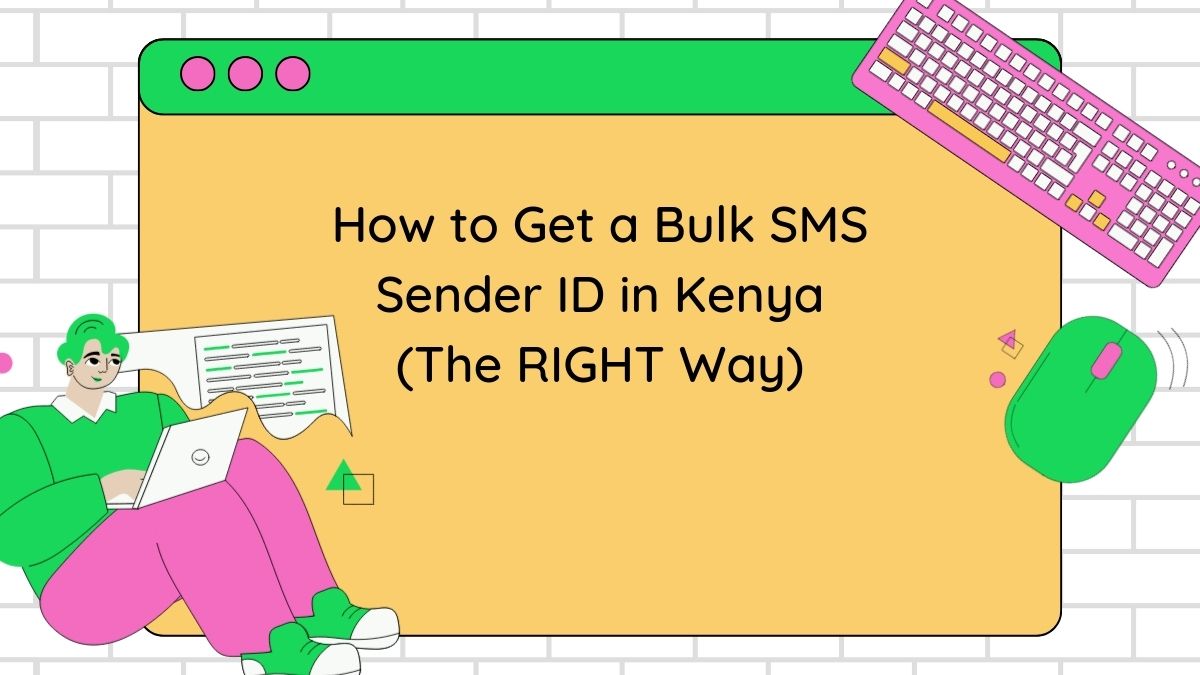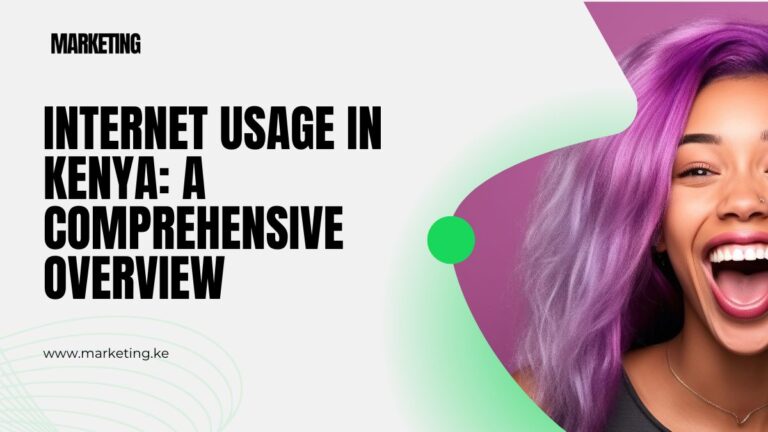How to Get a Bulk SMS Sender ID in Kenya (The RIGHT Way)
Want to send bulk SMS messages in Kenya that actually get read? Then you NEED a sender ID.
It’s like the difference between a handwritten letter and a piece of junk mail.
One gets opened, the other goes straight to the trash.
A sender ID is simply the name or number that pops up on someone’s phone when they receive your SMS.
Think of it as your digital signature.
With a sender ID, your messages look professional, trustworthy, and way more likely to get opened.
Now, let’s dive into exactly how to get your own bulk SMS sender ID in Kenya:
Why a Sender ID is Non-Negotiable for Your Business
First things first, let’s break down WHY this is so crucial.
Imagine you’re a customer.
Are you more likely to open a message from “Bob’s Furniture” or a random string of numbers? Exactly.
Here’s the deal:
- Brand Recognition: A sender ID screams legitimacy. Customers instantly know it’s you, building trust and brand recall.
- Higher Open Rates: People are bombarded with messages. A recognizable sender ID cuts through the noise and boosts your open rates.
- Improved Engagement: When customers trust the sender, they’re more likely to read your message, click your links, and take action.
Bottom line: A sender ID is a must-have for any serious business using SMS marketing in Kenya.
Kenyan Bulk SMS Sender ID Regulations
Now, here’s the thing about Kenya: you can’t just make up any old sender ID.
The Communications Authority of Kenya (CA) has some rules in place.
Why?
To protect consumers from spam and fraud.
Here’s what you need to know:
- Licensed Providers: You have to go through a licensed content service provider (CSP). These are companies authorized by the CA to handle bulk SMS.
- No Alphanumeric Sender IDs for Promotional Messages: For promotional messages, you can only use numeric sender IDs.
- Alphanumeric Sender IDs for Transactional Messages: If you’re sending transactional messages (like order confirmations or account updates), you can use an alphanumeric sender ID (e.g., your company name).
Don’t worry, it’s not as complicated as it sounds. Just find a reputable CSP, and they’ll guide you through the process.
Choosing the Right Content Service Provider (CSP)
This is a big decision.
Your CSP is your partner in bulk SMS, so choose wisely.
Here’s what to look for:
- Direct Connectivity: Make sure they have direct connections to all the major telcos in Kenya (Safaricom, Airtel, Telkom). This ensures fast and reliable message delivery.
- CA Licensing: Double-check they’re licensed by the Communications Authority of Kenya.
- Pricing: Compare pricing from different providers. Look for transparent pricing with no hidden fees.
- Support: Choose a CSP with excellent customer support. You want someone responsive and helpful if you run into any issues.
- Features: Do they offer additional features you might need, like message scheduling, reporting, and analytics?
Top CSP Recommendations:
- SMSLeopard: Known for their reliability and direct telco connections.
- MobiFour Technologies: Offers a user-friendly platform and good customer support.
- Africa’s Talking: Provides a robust API for developers.
- Safaricom
- Airtel
- Telkom
Do your research, compare your options, and choose the CSP that best fits your needs.
Requirements for Registration
- Authorization Letter: A formal letter authorizing the application for the Sender ID.
- Company Registration Certificate: Proof of your business registration.
- Trademark Certificate: Required if the Sender ID pertains to a product or service distinct from the business name.
- Registration Fee: A one-time payment, typically around KES 7,500 plus VAT (16%), totaling KES 8,700 for Safaricom and Airtel
Sender ID Application Process
Once you’ve chosen your CSP, it’s time to apply for your sender ID. Here’s a general overview of the process:
- Complete the Application Form: Fill out the Sender ID request form with your preferred ID (up to 11 characters, no spaces).
- Submit Required Documents: Send the completed form along with the authorization letter, registration certificate, and trademark certificate (if applicable) to your chosen SMS service provider.
- Payment: Make the required payment via mobile money (e.g., M-Pesa) to the designated account provided by the service provider.
- Approval Timeline: Applications are typically submitted on Mondays and Thursdays, with approvals expected on Tuesdays and Fridays for Safaricom. Other networks may take between 7 to 14 working days for processing
Pro Tip: Work closely with your CSP throughout the process. They can answer your questions and help you avoid any delays.
How much is a sender ID in Kenya?
In Kenya, the cost of setting up a Sender ID varies depending on the telecommunications provider. Here are the key details:
Pricing Overview
Safaricom: One-time fee: KES 7,500 (approximately $50) plus 16% VAT, totaling KES 8,700.
Airtel: One-time fee: KES 8,700 (including VAT).
Telkom: One-time fee: KES 4,700 (including VAT).
All Networks (Discounted): A bundled option for KES 20,000.
The Sender ID registration in Kenya is generally a one-time fee and does not require renewal.
However, some providers may have additional costs related to maintenance or deposits.
Again, ensure that the Sender ID in Kenya aligns with your brand name or product and adheres to the guidelines provided by the respective telecommunications companies.
This setup allows your businesses to send bulk SMS messages in Kenya that display their brand name as the sender, enhancing recognition and trust among recipients.
Best Practices for Using Your Sender ID
Congratulations!
You’ve got your sender ID in Kenya.
Now, let’s make sure you use it effectively:
- Keep it Short and Memorable: Your sender ID should be easy to recognize and remember.
- Be Consistent: Use the same sender ID for all your messages. This builds brand consistency and trust.
- Don’t Mislead: Your sender ID should accurately reflect your business or organization.
- Monitor Your Reputation: Keep an eye on your sender ID’s reputation. If you start getting complaints, it could be blocked.
Remember: Your sender ID is a valuable asset. Use it wisely to build your brand and connect with your customers.
Advanced Strategies
Want to take your SMS marketing to the next level?
Consider sender ID diversification.
This means using multiple sender IDs in Kenya for different purposes or campaigns.
Here’s how it works:
- Separate IDs for Different Brands: If you have multiple brands, use a different sender ID for each one.
- Targeted Campaigns: Use different sender IDs for specific campaigns or promotions.
- Improve Deliverability: Diversifying your sender IDs can help improve deliverability rates, especially for high-volume sending.
Important Note: Make sure your CSP supports sender ID diversification.
Troubleshooting Common Sender ID Issues
Running into problems with your sender ID? Here are some common issues and how to fix them:
- Sender ID Blocked: If your sender ID is blocked, contact your CSP and the CA to find out why. It could be due to spam complaints or non-compliance with regulations.
- Messages Not Delivered: Check with your CSP to ensure there are no technical issues. Also, make sure your recipients haven’t opted out of receiving messages.
- Incorrect Sender ID Displayed: Double-check that you’re using the correct sender ID in your messages. If the problem persists, contact your CSP for support.
Key Takeaway: A bulk SMS sender ID is essential for any business in Kenya looking to leverage the power of SMS marketing. By following these steps and best practices, you can ensure your messages get delivered, opened, and read.
Read also:







